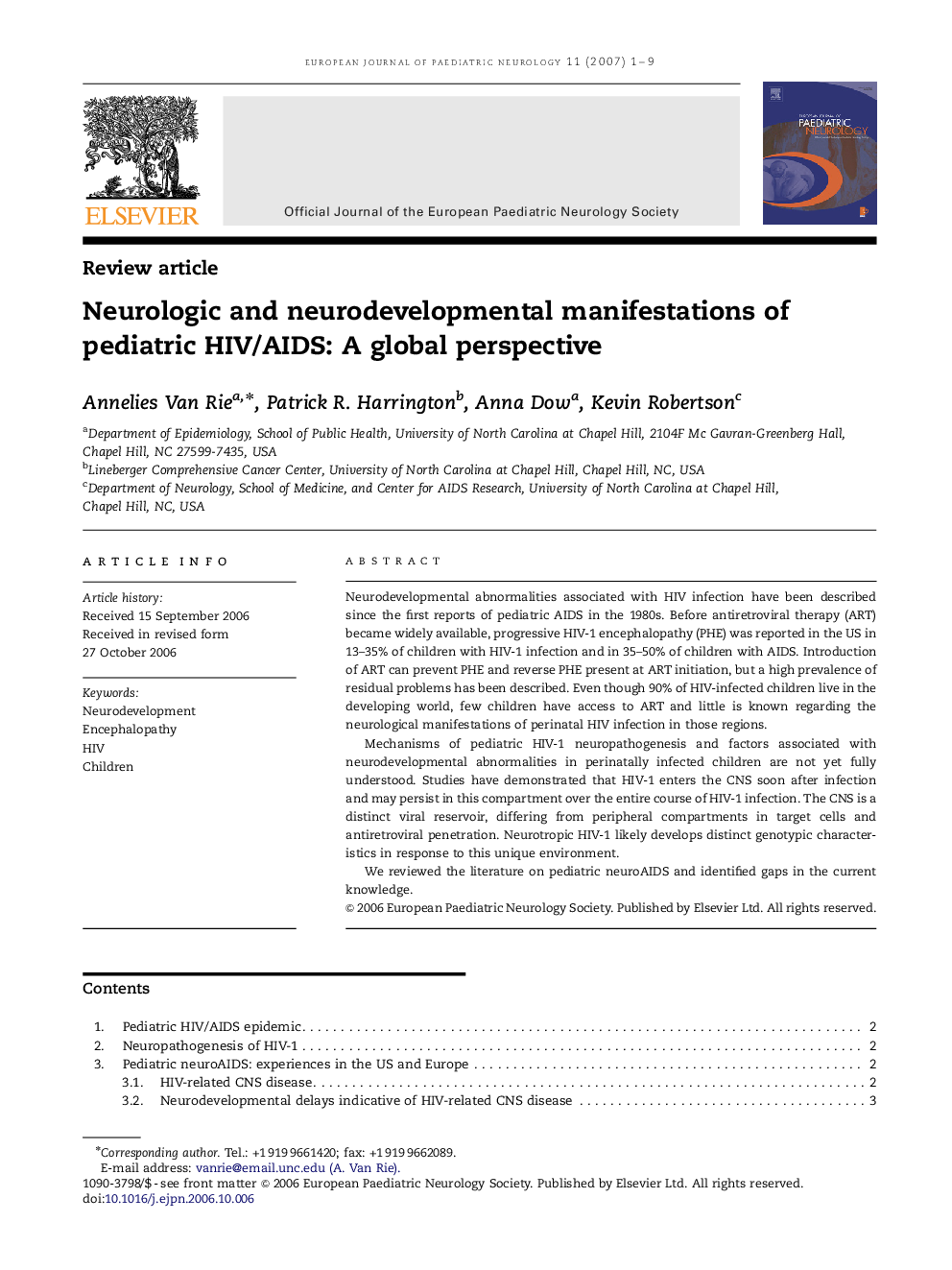| Article ID | Journal | Published Year | Pages | File Type |
|---|---|---|---|---|
| 3055137 | European Journal of Paediatric Neurology | 2007 | 9 Pages |
Neurodevelopmental abnormalities associated with HIV infection have been described since the first reports of pediatric AIDS in the 1980s. Before antiretroviral therapy (ART) became widely available, progressive HIV-1 encephalopathy (PHE) was reported in the US in 13–35% of children with HIV-1 infection and in 35–50% of children with AIDS. Introduction of ART can prevent PHE and reverse PHE present at ART initiation, but a high prevalence of residual problems has been described. Even though 90% of HIV-infected children live in the developing world, few children have access to ART and little is known regarding the neurological manifestations of perinatal HIV infection in those regions.Mechanisms of pediatric HIV-1 neuropathogenesis and factors associated with neurodevelopmental abnormalities in perinatally infected children are not yet fully understood. Studies have demonstrated that HIV-1 enters the CNS soon after infection and may persist in this compartment over the entire course of HIV-1 infection. The CNS is a distinct viral reservoir, differing from peripheral compartments in target cells and antiretroviral penetration. Neurotropic HIV-1 likely develops distinct genotypic characteristics in response to this unique environment.We reviewed the literature on pediatric neuroAIDS and identified gaps in the current knowledge.
